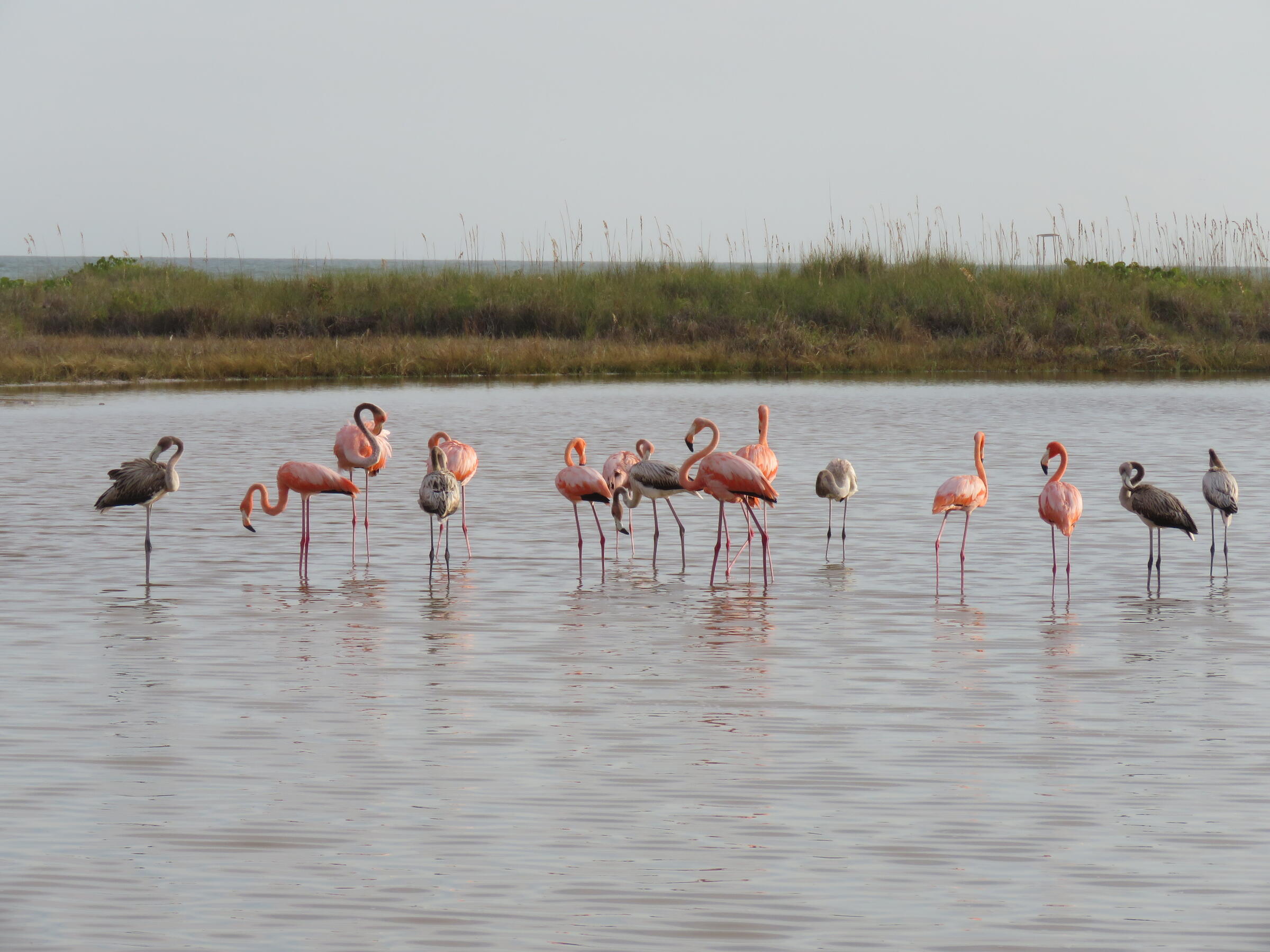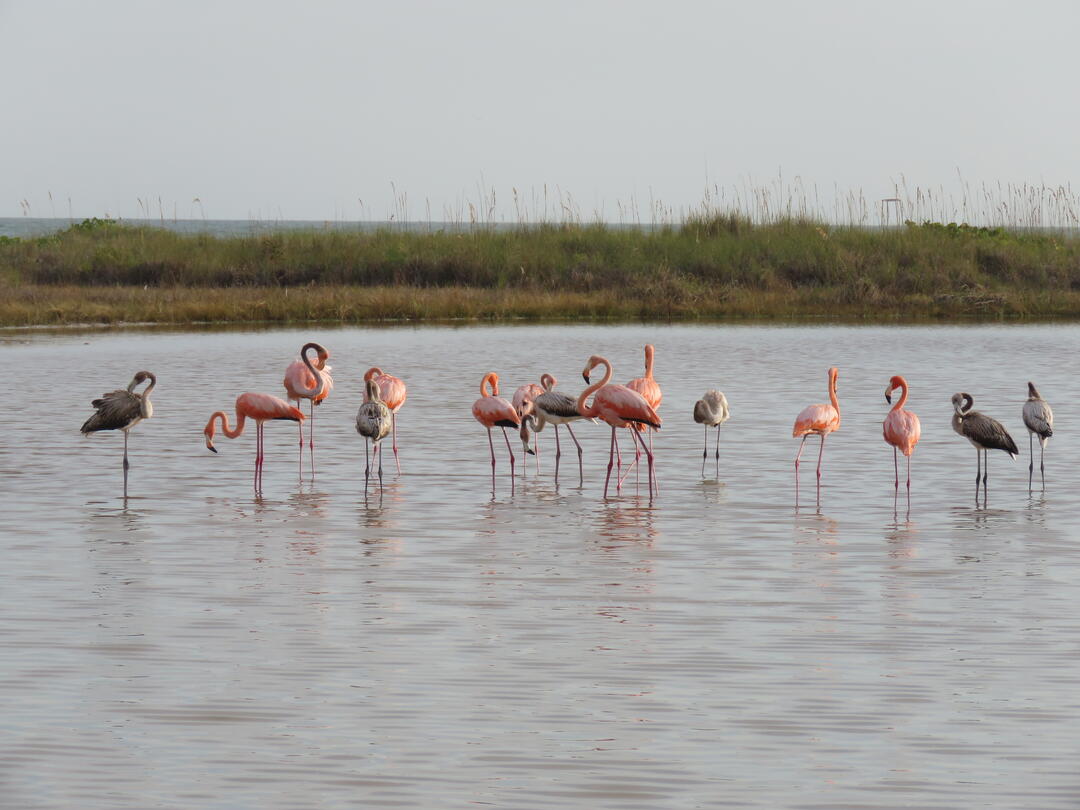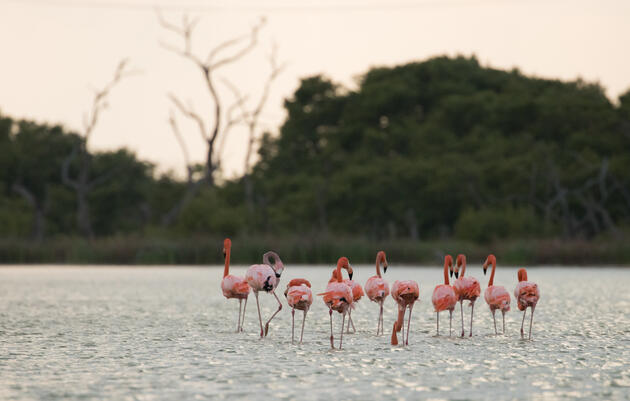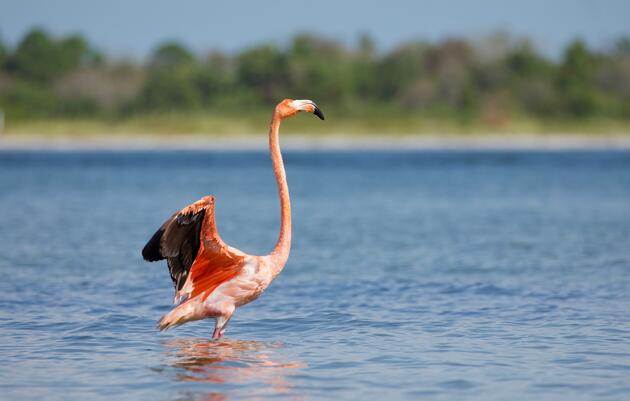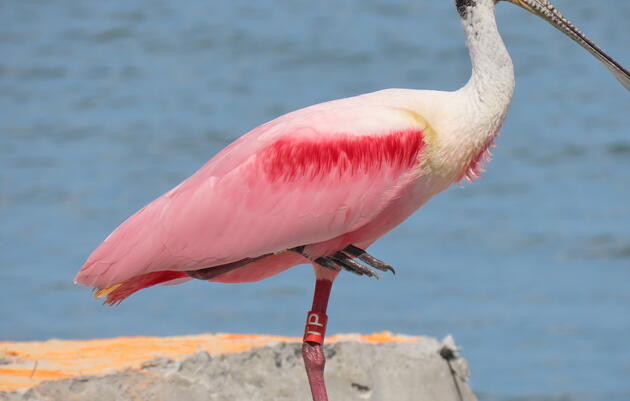Want to learn more? Watch our flamingo presentation!
For the first time in almost a century, Floridians are seeing a lot of flamingos. Blown in by Hurricane Idalia, American Flamingos have landed as far north as St. Marks Wildlife Refuge all the way south to Collier County, including a record sighting in Alachua County.
Where are they?
Sightings have been reported on beaches and in other natural areas including at Tigertail Beach, the Sanibel Causeway, Bunche Beach, Punta Gorda, Charlotte Harbor, Clearwater, Treasure Island, Siesta Key, Tarpon Springs, St. Marks National Wildlife Refuge, Lake Pithlachoco, Ohio, North Carolina, South Carolina, Virginia, Texas, Tennessee, Alabama, and more.
Where did they come from?
American Flamingos are more numerous in Mexico and Cuba, and Hurricane Idalia likely “captured” single flamingos and small flocks from these regions, blowing them to Florida on strong storm winds. Some flamingos that arrive in this way remain in Florida, like the famous Pinky at St. Marks National Wildlife Refuge, a bird that arrived after Hurricane Michael in 2018 and has appeared for part of every year since.
Why aren’t there more flamingos in Florida?
Before the arrival of Europeans and European-descended settlers, Florida was a haven for wading birds. Massive colonies of Roseate Spoonbills, Great Egrets, White Ibises, Wood Storks, and so many more lived side by side with indigenous communities, including the Seminole, Calusa, Tequesta, and Miccosukee nations.
“We know flamingoes were there too,” explains Jerry Lorenz, PhD, director of research for Audubon Florida. He and his colleagues dove into the historic literature, flagging mentions of flamingo sightings in the 19th and early 20th centuries, sometimes thousands of birds at a time.
Unfortunately, the use of feathers as adornments on women’s hats became all the rage, increasing in popularity until in the late 1800s, when an ounce of feathers fetched more than gold. Hunters swept through the wading bird colonies of the Southeast, decimating their populations. Only through the formation of the National Audubon Society and the passage of laws outlawing this carnage—plus hiring wardens to protect the wading birds—did bird numbers begin to recover. Sadly, the recovery was stymied again by the ditching and draining of the Everglades in the 20th century, which destroyed wading bird habitat.
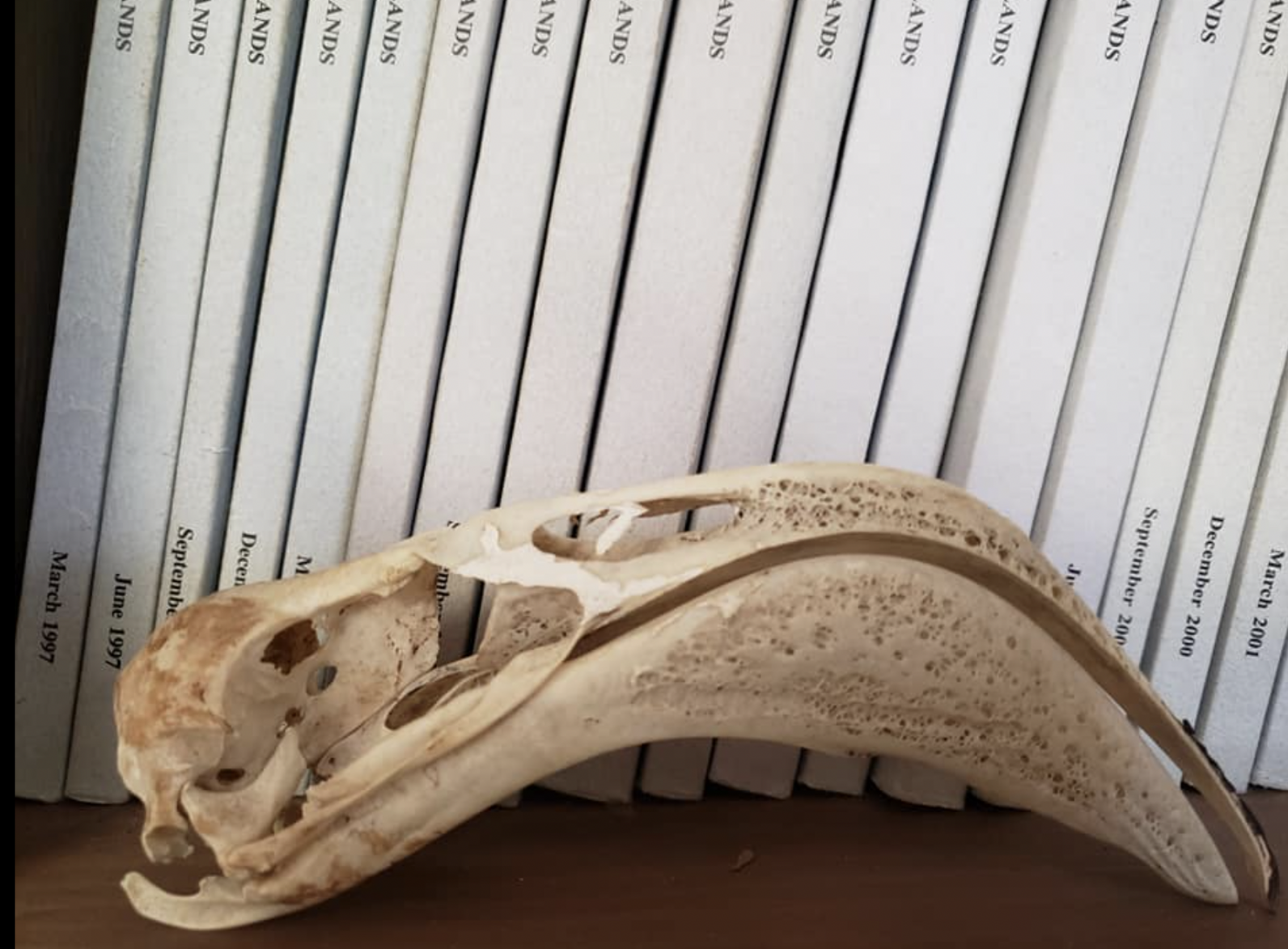
Flamingo sightings in the historical record petered out. A search through the literature revealed sporadic flamingo sightings up to the 1930s, but instead of thousands—or even dozens—of pink birds, people reported less than a handful at a time.
After decades of organizing and public pressure to heal the Everglades—including by Audubon—President Bill Clinton signed the Comprehensive Everglades Restoration Plan into law in 2000. The legislation marked one of the most ambitious restoration initiatives in the world, a public promise to reverse the human interference that had starved the Everglades of the water it needs to function as a healthy ecosystem. Momentum proved slow in the beginning, but in recent years, important projects have finally come online to bring millions of gallons back into the Everglades, including the removal and bridging of the Tamiami Trail road, a roadway that has bisected the Everglades and accidentally functioned as a dam for decades, the groundbreaking of the Everglades Agricultural Area Reservoir to clean and store water before it flows south to Florida Bay, and so much more. A historic investment of federal and state funds means these projects and ones like them will continue to improve ecosystem health into the future. Audubon continues to work with local, state, and federal officials to keep the restoration momentum flowing into the Everglades.
Wading birds show that if you get the water right, they are capable of breeding successfully once more. Both 2018 and 2021 proved to be strong nesting years for most of the Everglades’ wading birds, with hopes that continuing restoration projects will make the region more resilient as Florida deals with the ongoing and future impacts of a changing climate.
As Roseate Spoonbills have recovered, as an example, they have spread their range farther north, and now are regularly seen in places like Tampa Bay. Lorenz and his team hope through additional restoration and conservation efforts, we can see a similar recovery for the equally pink American Flamingo.
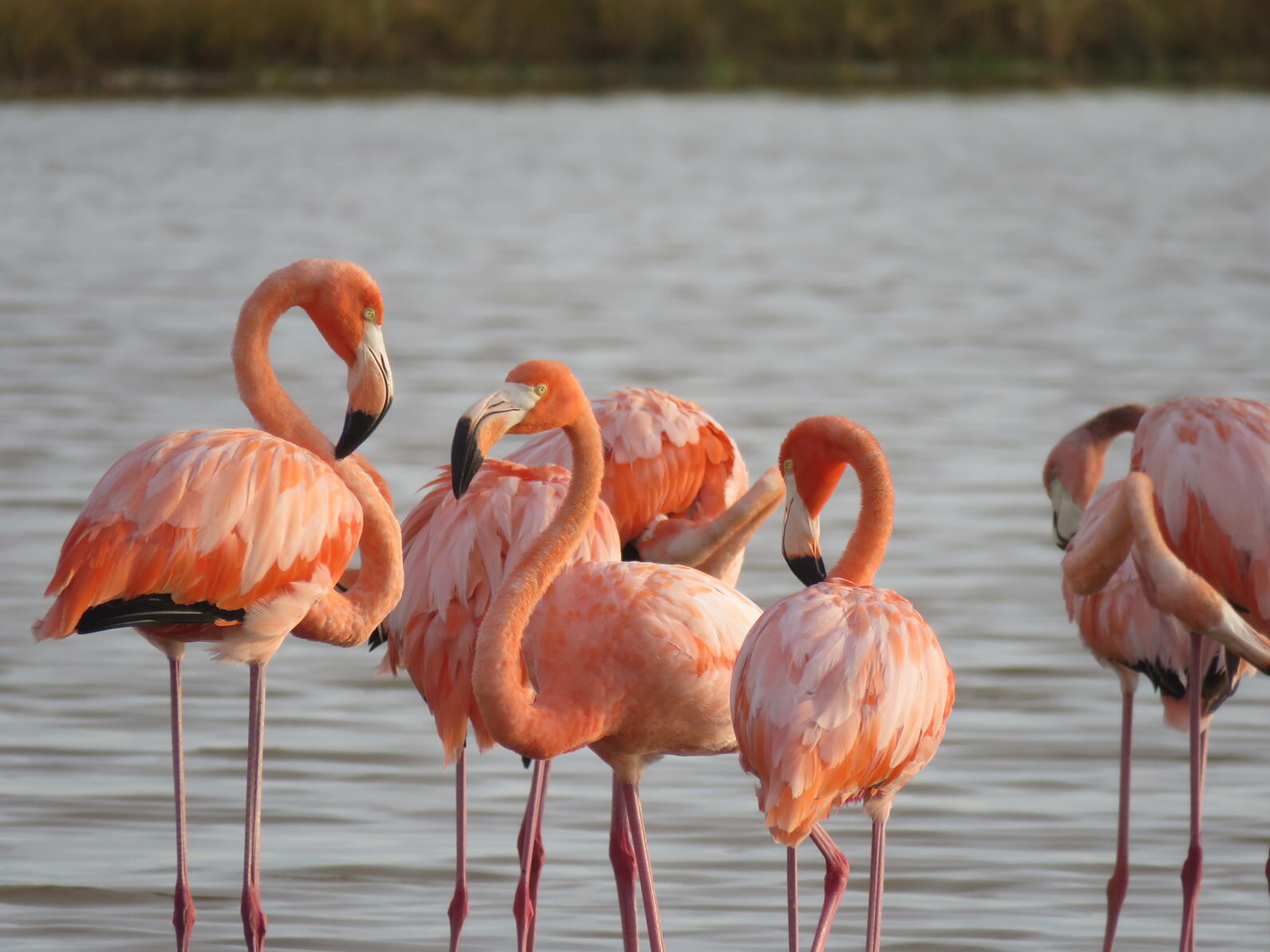
Can we help the American Flamingo in Florida?
Yes!
-Record your sightings on public platforms like eBird, so researchers can track flamingo numbers and locations in the Sunshine State.
-Advocate for Everglades restoration and efforts to improve water quality. If American Flamingos have healthy places to live and raise their families, their Florida population numbers can improve.
-Sign up for our Advocate newsletter and we’ll keep you up to date on ways to use your voice to protect wading birds like the flamingo.

